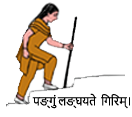Inflammatory rheumatic diseases usually (75-95% of patients) become less severe from the second or third month of pregnancy and remain until delivery. The disease neither leads to abortions nor has any effect on the growth of the fetus. Patients with inflammatory arthritis need not take any special precautions, and no special monitoring is required during pregnancy. It is very unlikely that every child born to such a mother will develop arthritis as these are not hereditary diseases. Rheumatoid arthritis is known to flare up after delivery. New onset of disease following delivery is also common.
The disease must be adequately controlled by optimal usage of effective drugs before planning conception. One needs to shift to drugs that can be safely used during pregnancy, as most drugs reach the fetus through circulating blood. One must consider the risk of morbidity due to joint deformities and long-term life risk due to vascular events following untreated or inadequately controlled disease. All drugs should be taken in the lowest possible dose and for the shortest period during pregnancy. However, accidental exposure to a drug during this period is not an indication for termination of pregnancy. The decision regarding termination must be based on the potential risk to the fetus as determined by ultrasound examination (for structural abnormalities) and amniocentesis (for chromosomal abnormalities). Medical termination of pregnancy is indicated only in cases with fetal abnormalities.
Drugs for use during pregnancy are classified as safe (A), safe in animals-no data in humans (B), unsafe in animals-risk cannot be ruled out though can be used given potential benefits despite potential risks (C), positive evidence of risk in humans, though can be used because of potential benefits despite potential risks (D), and unsafe (X). Drugs from category B need to be used with caution. In contrast, those from categories C and D are required to be used only if the benefits outweigh the risks (see table). A detailed doctor-patient discussion about the use of all drugs is necessary to plan their appropriate usage.
Recommendations related to pregnancy on the use of drugs are given in the following table.
| Drug | Remark | ||
|---|---|---|---|
| 1 |
Paracetamol |
A |
Safe |
| 2 |
Anti-inflammatory Painkillers |
B |
Safe till 26 weeks. Use the lowest dose intermittently. Risk of fetal loss. A concern of premature closure of a heart vessel – ultrasound monitoring advisable. (Celecoxib is Category C) |
| 3 |
Steroids |
B |
Use the smallest dose. Use prednisone only as it does not reach the fetus. Small risk of cleft palate. Monitor blood pressure and blood sugar. Intra-articular injections are safe. |
| 4 |
Hydroxychloroquin |
C |
No risks are reported. Do not use Chloroquine. |
| 5 |
Sulphasalazine |
B |
No effect on fertility. No pregnancy risks are reported. However, folic acid supplementation is necessary. |
| 6 |
Methotrexate |
X |
Contraindicated. Stop three months before conception. Few cases of fetal abnormalities are reported. Normal births are also reported. Monitor in case of accidental exposure. |
| 7 |
Leflunomide |
X |
Toxic in animal studies. Stop for two years before conception or go for Cholestyramine detoxification three months in advance. Normal births are reported. |
| 8 |
Azathioprine |
D |
Safer option. Scarce reports of congenital abnormalities. |
| 9 |
Cyclophosphamide |
D |
Unsafe. Stop 12 weeks before conception. |
| 10 |
Mycophenolate |
D |
Unsafe. Conception allowed after three drug-free months. Stop six weeks before conception. |
| 11 |
Tofacitinib |
C |
Can harm fetus. Stop six weeks before conception. |
| 12 |
Etanercept Infliximab Adalimumab |
B |
It can be used up to the second trimester |
| 13 |
Rituximab |
D |
Insufficient data. Stop six months before conception. It may be used if no safer alternative is available. |
| 14 |
Tocilizumab |
D |
Insufficient data. Stop 12 weeks before conception. It may be used if no safer alternative is available. |
